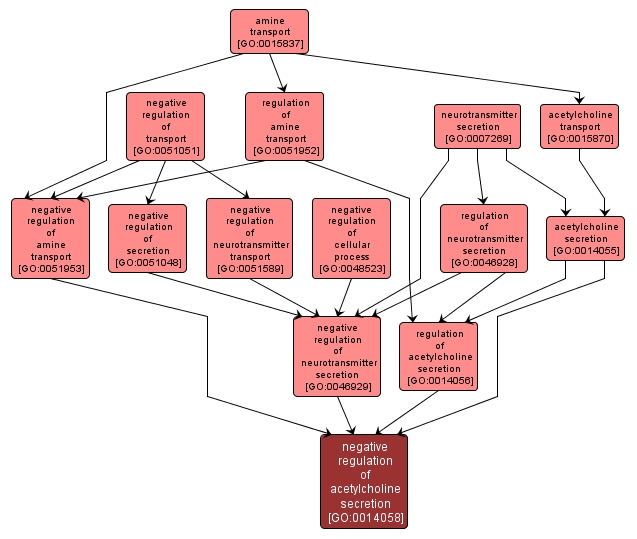GO TERM SUMMARY
|
| Name: |
negative regulation of acetylcholine secretion |
| Acc: |
GO:0014058 |
| Aspect: |
Biological Process |
| Desc: |
Any process that stops, prevents or reduces the frequency, rate or extent of the regulated release of acetylcholine. |
Synonyms:
- down regulation of acetylcholine secretion
- down-regulation of acetylcholine secretion
- downregulation of acetylcholine secretion
- inhibition of acetylcholine secretion
|
|

|
INTERACTIVE GO GRAPH
|














